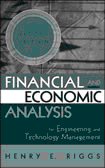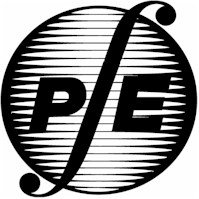Idaho Society of Professional Engineers
Friday Update – 06/01/07
UPCOMING EVENTS:
• July 26 – 29, 2007 –
NSPE 2007 Annual
Conference – Denver, Colorado
The
ISPE Magic Valley Chapter is now accepting nominations for the
following positions for the July 2007 - June 2008 term:
Chapter President
Chapter Secretary / Treasurer
Chapter Director
The qualifications for office are an active member of ISPE and willing to serve.
The president must also be a professional engineer. Please respond to
Joshua Baird by Tuesday, June 5,
2007 at 5:00 p.m. local time. Please feel free to contact Don Acheson
(current president) or Josh Baird with any questions at 208-733-2446.

Financial and Economic Analysis
for Engineering and Technology Management
Expert guidance for fiscally responsible engineering and technology managers.
This thoroughly updated Second Edition is an accessible self-study guide and
text that helps engineers extract important meaning from financial statements
and accounting records, ask insightful questions, engage in thoughtful debate
about accounting and financial issues, and make informed decisions that benefit
their companies.

MATHCOUNTS PROBLEM OF THE WEEK
Can you solve this MATHCOUNTS problem? The answer will appear in next week's
edition of the Friday Update!
Combining Geometric Shapes
Myrta is interested in exploring some relationships between similar shapes. She
is curious about relationships when two similar geometric shapes are combined to
form a third geometric shape that is similar to the original shapes and whose
area is the sum of the areas of the original shapes.
The radius of circle I is 3 inches and the radius of circle II is 4 inches. What
is the radius of circle III whose area is the sum of the areas of circles I and
II?
--------------------------------------------------------------------------------
The side length of square I is 7 cm and the side length of square II is 24 cm.
What is the side length, in cm, of square III whose area is the sum of the areas
of squares I and II?
--------------------------------------------------------------------------------
The side length of equilateral triangle I is10 feet and the side length of
equilateral triangle II is 24 feet. What is the side length of equilateral
triangle III, in feet, whose area is the sum of the areas of equilateral
triangles I and II?
--------------------------------------------------------------------------------
Myrta thinks she sees a pattern and asks herself the following question: If I
take any two equilateral triangles A and B whose side lengths are 2a and 2b
respectively, what is the side length of equilateral triangle C whose area is
the sum of the areas of equilateral triangles A and B? Express your answer in
terms of a and b.
Answer to last week’s MATHCOUNTS problem:
1,744,855 ÷ 14,250 × 100% = 12,244.59649%. Expressed to the nearest whole
number, the winner’s share in 2006 is 12,245% of the winner’s share in 1911.
--------------------------------------------------------------------------------
There are two straightaways at 0.625 mile each, two short chute straightaways at
0.125 mile each and four turns at 0.250 mile each. (2 × 0.625) + (2 × 0.125) +
(4 × 0.250) = 2.500 miles.
--------------------------------------------------------------------------------
The distance for 1 lap is 2.5 miles. Divide the distance by the time and convert
seconds to hours. (2.5 miles ÷ 37.895 sec) × (3600 sec ÷ 1 hr) = 237.49835. Arie
Luyendyk’s 1 lap speed record is 237.498 miles per hour. The distance for 4 laps
is 10.0 miles. Convert the time to seconds, 2 minutes 31.908 seconds = 151.908
seconds. Divide the distance by the time and convert seconds to hours. (10.0
miles ÷ 151.908 sec) × (3600 sec ÷ 1 hr) = 236.98554. Arie Luyendyk’s 4-lap
speed record is 236.986 miles per hour.
--------------------------------------------------------------------------------
0.0635 sec × (243 mi/hr) × (1 hr / 3600 sec) × (5280 ft/1 mi) = 22.63 ft. Sam
Hornish Jr. in car number 6 would cross the finish line 23 feet ahead of Marco
Andretti in car number 26.
If you want to see last week's problem again, click
http://www.mathcounts.org/webarticles/anmviewer.asp?a=1026&z=110
Idaho Society of Professional Engineers
PO Box 170239
Boise, ID 83717-0239
208-426-0636
Fax: 208-426-0639
E-Mail: ispe@idahospe.org
Web Site: www.Idahospe.org
 Idaho
Society of Professional Engineers
Idaho
Society of Professional Engineers